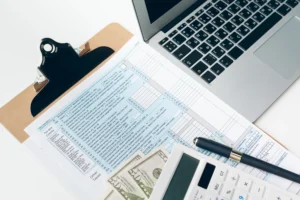
Business owners generally prefer to work with entities they know and trust. But related-party transactions can provide opportunities for individuals to act in a manner that’s inconsistent with the interests of shareholders. That’s why auditors take pains to identify and properly address related-party transactions.
What is a related party?
Accounting Standards Codification (ASC) Topic 850 defines a related-party transaction as one that takes place between:
- A parent entity and its subsidiaries,
- Subsidiaries of a common parent,
- An entity and trusts for the benefit of its employees, such as pension and profit-sharing trusts that are managed by or under the trusteeship of the entity’s management,
- An entity and its principal owners and managers (or members of their immediate families), and
- Affiliated entities.
What’s the risk?
Related-party transactions sometimes involve contracts for goods or services that are priced at less (or more) favorable terms than those in similar arm’s length transactions between unrelated third parties. For example, a spinoff business might lease office space from its parent company at below-market rates. Or a closely held manufacturer might pay the owner’s son an above-market salary and various perks that aren’t available to unrelated employees.
How do auditors address these transactions?
Given the potential for double dealing with related parties, auditors spend significant time hunting for undisclosed related-party transactions. Examples of documents and data sources that can help uncover these transactions are:
- A list of the company’s current related parties and associated transactions,
- Minutes from board of directors’ meetings, particularly when the board discusses significant business transactions,
- Disclosures from board members and senior executives regarding their ownership of other entities, participation on additional boards and previous employment history,
- Bank statements, especially transactions involving intercompany wires, automated clearing house (ACH) transfers, and check payments, and
- Press releases announcing significant business transactions with related parties.
Audit procedures that target related-party transactions include 1) testing how related-party transactions are identified and coded in the company’s enterprise resource planning (ERP) system, 2) interviewing accounting personnel responsible for reporting related-party transactions in the company’s financial statements, and 3) analyzing presentation of related-party transactions in financial statements.
Accurate, complete reporting of these transactions requires robust internal controls. A company’s vendor approval process should provide guidelines to help accounting personnel determine whether a supplier qualifies as a related party and mark it accordingly in the ERP system. Without the right mechanisms in place, a company may inadvertently omit a disclosure about a related-party transaction.
Get it right
Undisclosed related-party transactions can raise a red flag to lenders and investors — and may even require a business to restate its financial results. Our auditors are committed to finding, disclosing and reporting these transactions in a transparent manner that complies with U.S. Generally Accepted Accounting Principles (GAAP). Contact us for help.
© 2018






